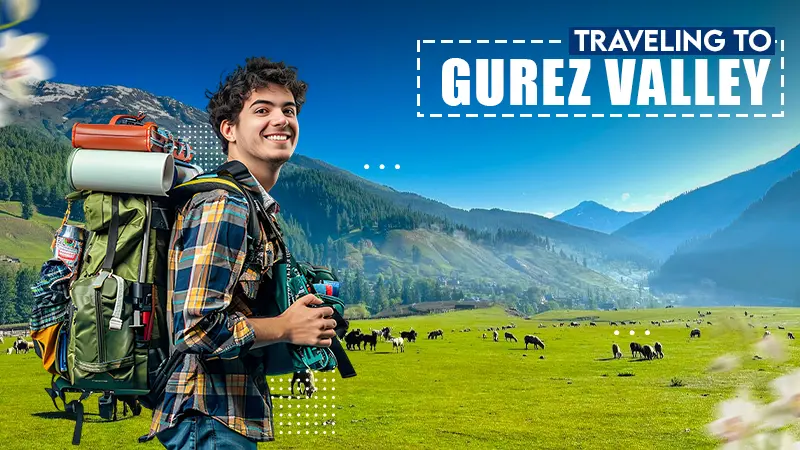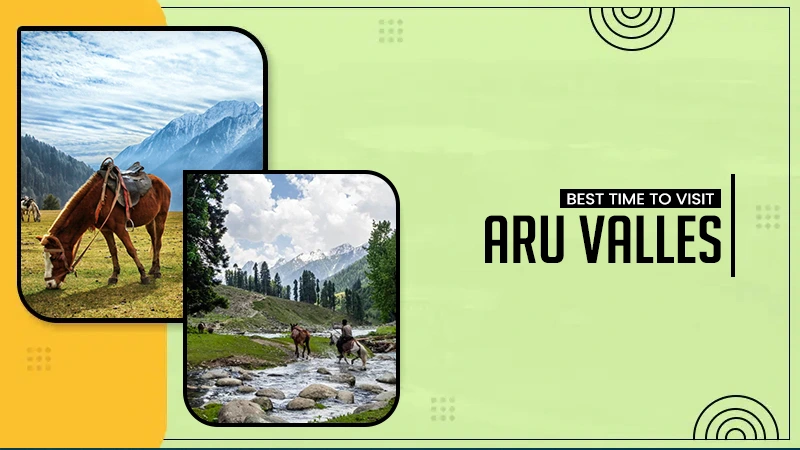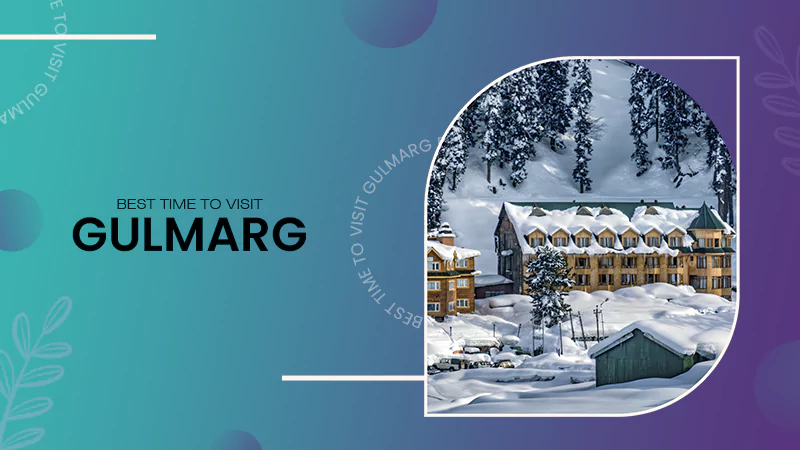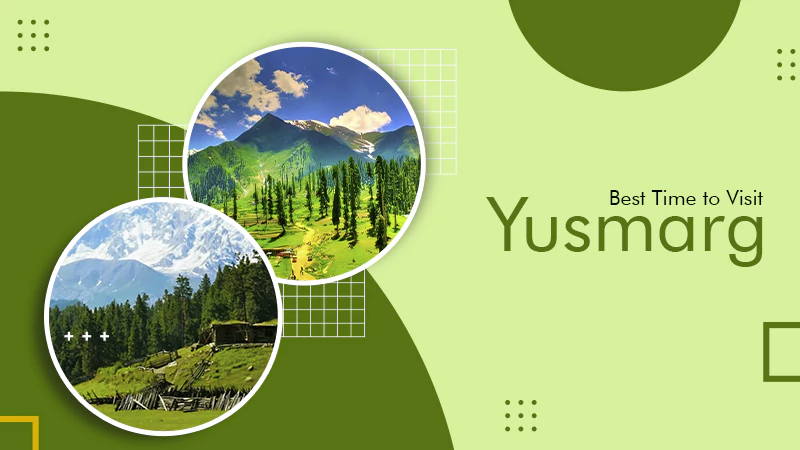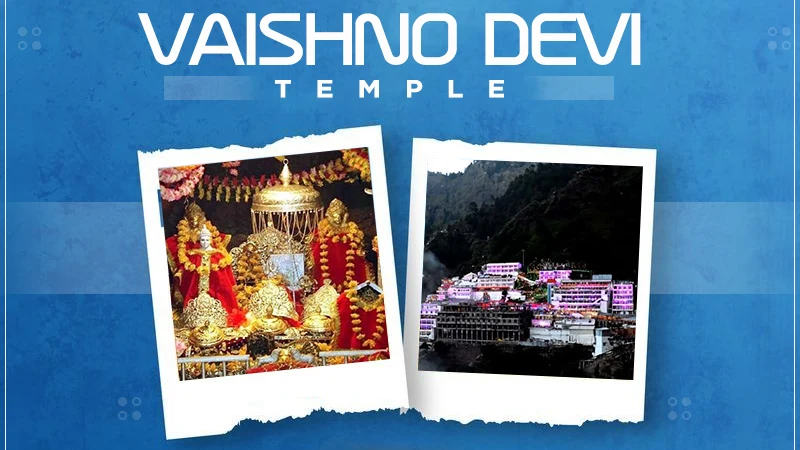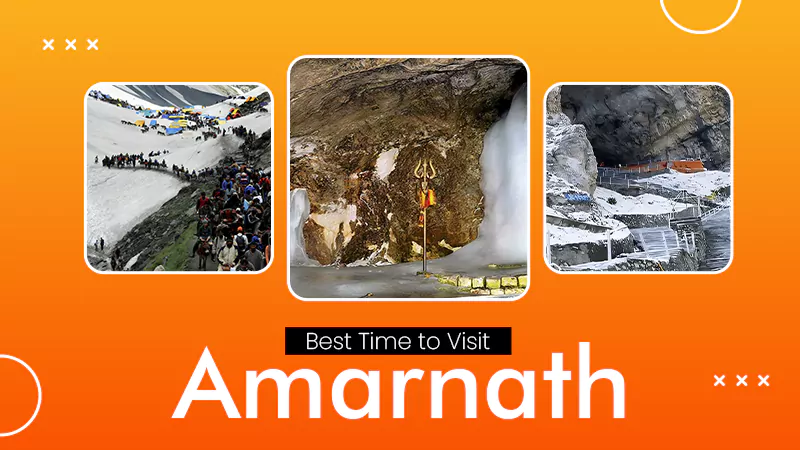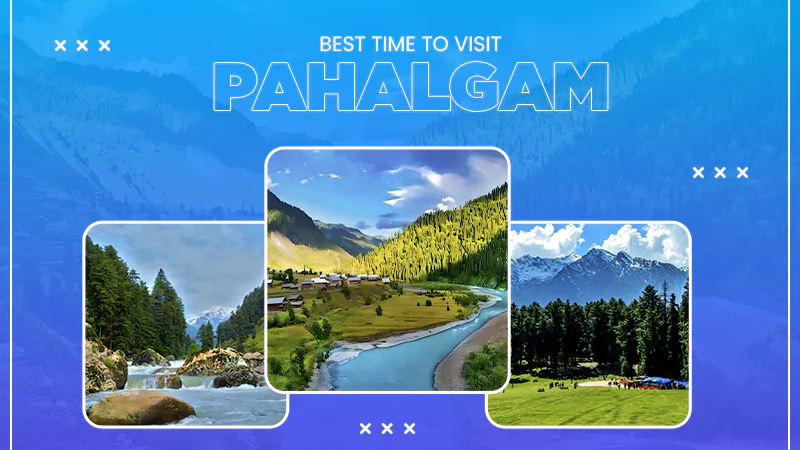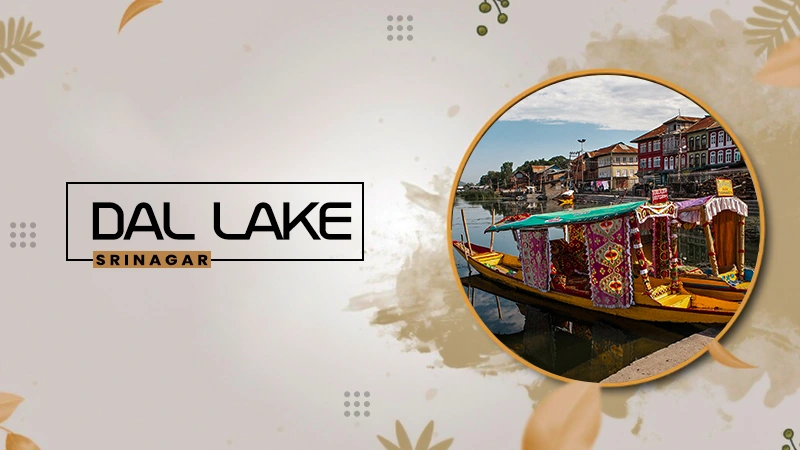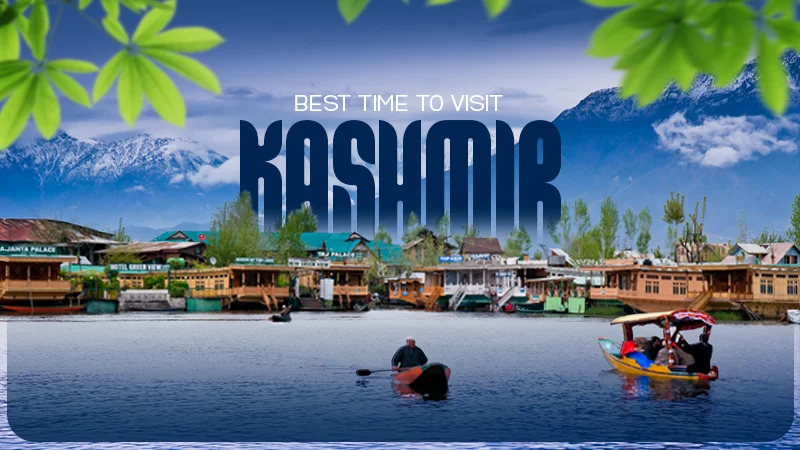Ans: The best times to visit Aru Valley are between March to June (mild weather, greenery, and trekking) and December to February (the winter magic and snow activities).
Best Time to Visit Aru Valley
- Why Timing Matters for Aru Valley
- Aru Valley Weather Overview
- Visiting Aru Valley by Season
- Month-by-Month Breakdown
- Best Time Based on Traveler Interests
- Road Conditions and Accessibility
- Festivals and Local Culture
- Packing Tips for Each Season
- Safety and Travel Tips
- Accommodation and Cost Variation
- Combining Aru Valley with Nearby Attractions
- Conclusion
- FAQ’s
Aru Valley is one of those places that you should at least visit once in your lifetime. Situated in the state of Jammu and Kashmir, India, near the town of Pahalgam in the Anantnag district, people from all across the world come here to see its beauty.
It is known for its picturesque meadows, lakes, and mountains, serving as a popular spot for trekking, skiing, horse riding, and experiencing nature. This place is packed with fun, and coming here means a trip that will never be forgotten. But what is the best time to come here?
In this article, I’ll mention the best time to visit Aru Valley, along with other important things so you’ll be completely prepared for your upcoming trip. Let’s get started.
Why Timing Matters for Aru Valley
The appeal of Aru Valley, Kashmir varies widely with the seasons. The Aru Valley temperature can drop from freezing levels in January to pleasant 20–25 degrees Celsius in July.
Heavy snowfall can lead to the roads from Srinagar to Aru Valley being blocked, while the monsoons can lead to landslides. Traveling at the right time of the year allows you to experience trekking, camping, and skiing easily.
Aru Valley Weather Overview
The weather conditions in Aru Valley are affected by the height of about 2,400 meters above sea level. Winters are cold and snowy, while summers are pleasant and mild.
Spring and summer have meadows that bloom, and autumn has golden colors under crisp skies. Summer (June – August): Mild, green, and perfect for outdoor activities.
Monsoon (September – October): Wet but lush, with fewer tourists.
Winter (November – February): Freezing, snowy, and ideal for snow sports.
Spring (March – May): Colorful meadows, comfortable weather, and great for photography.
Visiting Aru Valley by Season
Spring (March – May)
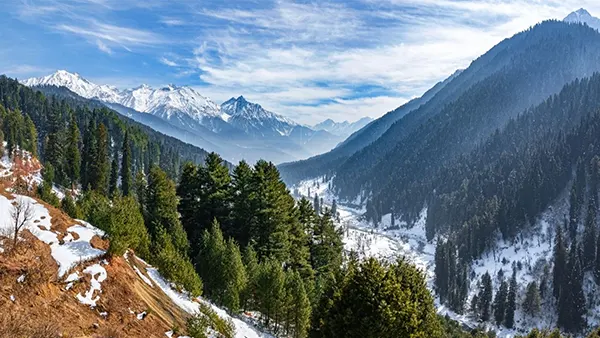
During spring, the valley begins to come alive after the snow has melted and the wildflowers bloom. Aru Valley temperatures during this season typically range from 8°C to 18°C. This is a great time for light treks, birdwatching, and landscape photographs.
Summer (June – August)
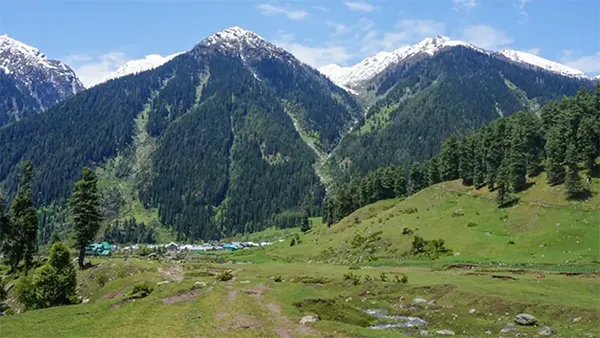
The most popular season is summer in Aru Valley. Summer in the valley is lush and vibrant. Temperatures are comfortable, averaging between 12°C and 25°C, which is an excellent temperature for families and trekkers. Since this is peak tourist season, you’re more likely to find priced accommodations. Treks to Kolahoi Glacier and Lidderwat typically start in this season.
Monsoon (September – October)
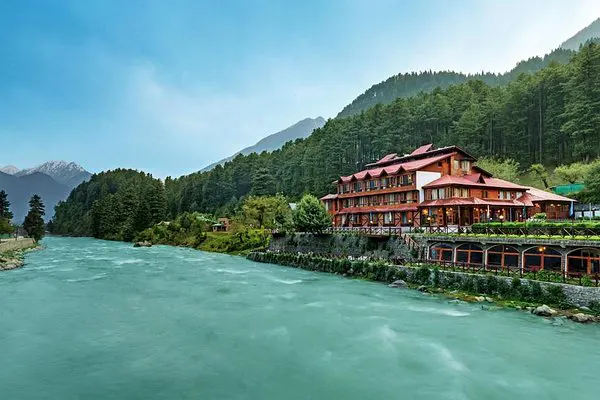
When the rain arrives, the valley transforms into a lush paradise, although roadblocks are a possibility. You can expect the weather in Aru Valley to remain cool, typically between 10°C and 18°C. There will be fewer people visiting, which is good for you if you’d like to create a quiet experience, but the quality of your trek may suffer because of the slippery trails.
Winter (November – February)
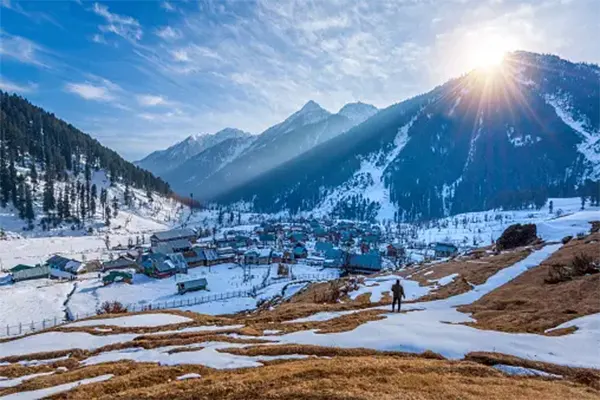
In winter, Aru Valley is a magical place, with heavy snowfall covering everything in white. During this season, temperatures can drop below -5°C. Popular activities in the winter are skiing, sledding, and taking photographs in the snow. You may find it difficult to get to your destination. Many of the hotels may be closed or have limited services, so be sure to consider this.
Month-by-Month Breakdown
Here’s a brief overview of the monthly highlights:
- March–April: Melting snow, blooming flowers, moderate cold.
- May–June: Best for hiking and camping.
- July–August: Warm days, crowded attractions, family trips.
- September–October: New foliage, less crowded, cooler.
- November–December: Snowfall begins, quiet.
- January–February: Winter, skiing, and snow sports.
Best Time Based on Traveller Interests
So, you might be visiting Ary Valley for some activities or other Interests, right? I have mapped out the best time based on various things, so you can plan accordingly. This includes:

For Adventure Seekers:
If you are into trekking or other such adventures, you should visit Aru Valley in late spring or summer. Because during this time, routes from Srinagar to Aru Valley are open, and the weather allows access to treks like Tarsar-Marsar.

For Nature & Photography Lovers:
Everyone loves nature and photography, and if that’s your passion, come to Aru Valley during spring and autumn as it brings stunning visuals, wildflowers in bloom, golden landscapes, and clear skies. The Aru and Betaab Valley region looks picture-perfect during these months.

For Families & Relaxation:
Quality and relaxation time are important after working hard every single day. So, the safest and most comfortable time for families is May–August. The Betaab Valley weather also stays mild then, making combined visits to Aru and Betaab Valley enjoyable.
Road Conditions and Accessibility
Normally open from March to November, the Srinagar to Aru Valley road may be closed temporarily at certain times in the peak of winter for heavy snow build-up that occurs.
During the monsoons, landslides are not uncommon, but only occasionally may they disrupt transportation. While 2WD can also be used during the summer months, it is always best to use an all-terrain or 4WD vehicle.
Festivals and Local Culture
To add some cultural flavor to your trip, plan your trip around Kashmiri festivals such as Eid, Baisakhi, or local village fairs. Visiting Aru Valley, Kashmir, during these times can give you a sense of authentic Kashmiri music, dance, or food.
Packing Tips for Each Season
Now, I’m going to give you some very useful tips for each season, and these tips will make your travel more comfortable.
- Summer: Pack light clothes, skin care products like sunscreen, and trekking shoes.
- Monsoon: Raincoats, waterproof footwear, and insect repellent.
- Winter: Must carry heavy woolen clothes, gloves, and snow boots.
- Spring/Autumn: Layered clothing, comfortable shoes, camera gear.
Safety and Travel Tips
Safety comes first, and you should be aware of certain tips that will always come in handy. This includes:
- In Aru Valley in winter, roads may get slippery; carry chains if self-driving.
- During monsoons, check updates on landslides.
- Altitude sickness is rare, but pace yourself during treks.
- Plan trips to nearby places like Betaab Valley only when the Betaab Valley weather is clear.
Accommodation and Cost Variation
You will find various accommodation options in Aru Valley, Kashmir, but there can be certain exceptions. For example, hotels and guesthouses in Aru Valley are affordable in spring and autumn, but rates peak in summer. In winter, only a few lodges remain open. Camping is popular in summer, but in Aru Valley in winter, options are limited due to snow.
Combining Aru Valley with Nearby Attractions
Tourists often try to cover Aru and Betaab Valley in a single trip. While their temperature might feel the same on the surface, Betaab Valley is slightly warmer in comparison because of its lower altitude positioning. You can also extend your itinerary to cover Pahalgam, Chandanwari, and Srinagar for a more memorable trip.
Conclusion
The ideal time for a visit to Aru Valley is genuinely dependent upon your travel style. For an adventure in the snow in Aru Valley, winter (December–February) is an excellent choice, while summer (May–August) is appropriate for trekking and camping in Aru Valley.
If you enjoy solitude, consider spring or autumn. At your chosen time, you will experience terrain diversity, weather in Aru Valley, and proximity to Betaab Valley, making Aru in Jammu and Kashmir a place full of enchantment.
FAQ’s
Q1. When is the best time to visit Aru Valley?
Q2. What is the best time for Pahalgam?
Ans: The best months are again, March to June for a comfortable climate and greenery, or December to February for winter snowfall and winter sports.
Q3. Why is Aru famous?
Ans: Aru Valley is famous for its sprawling meadows, stunning views, trekking itineraries (i.e. Kolahoi Glacier trek), adventure sports (skiing, horse riding, camping), and as a base camp for Lidderwat and other high altitude treks.
Q4. What is the cost of visiting Aru Valley?
Ans: There is no fee for visiting Aru Valley; costs include transport (cab from Pahalgam), food, and activities. You can expect a round-trip taxi fare (from and to Pahalgam) to range from ₹1000–₹1500 (variable depending on the season).
Q5. What city is Aru?
Ans: Aru is a small, picturesque village located just south of Pahalgam in the Anantnag district in Jammu and Kashmir, India.


